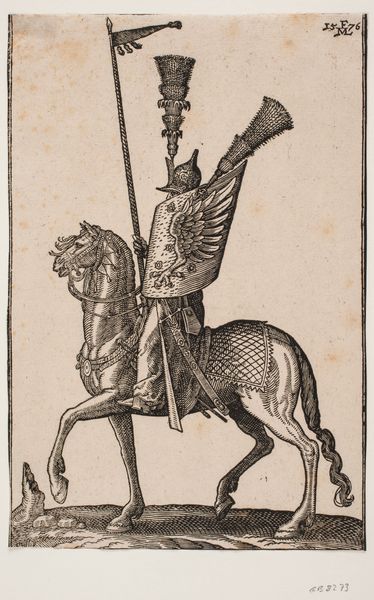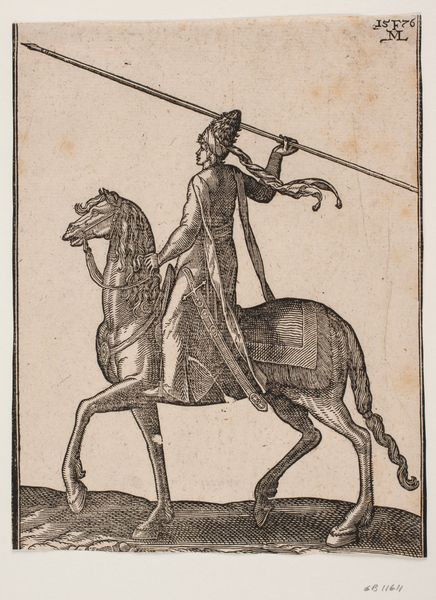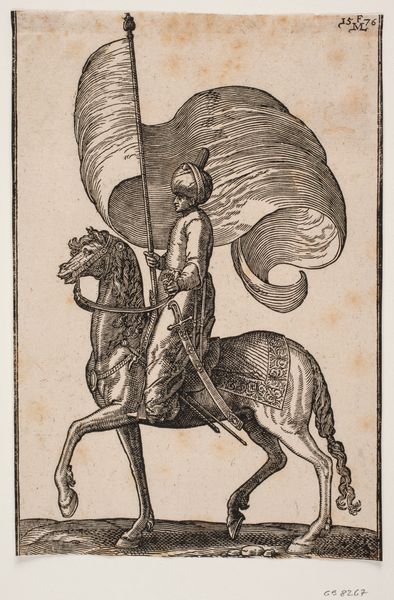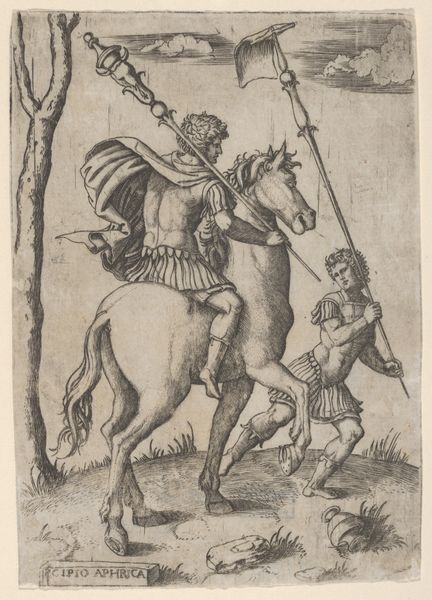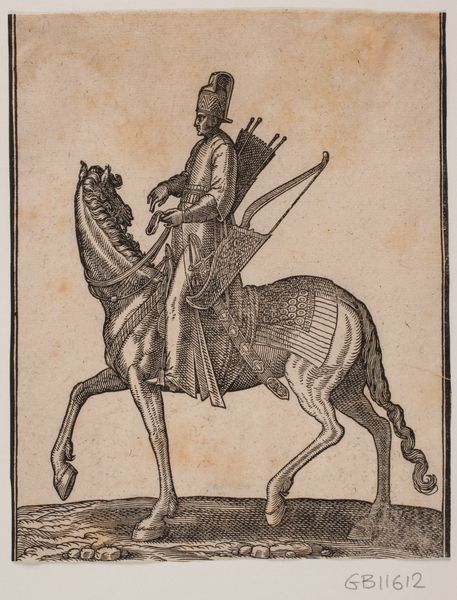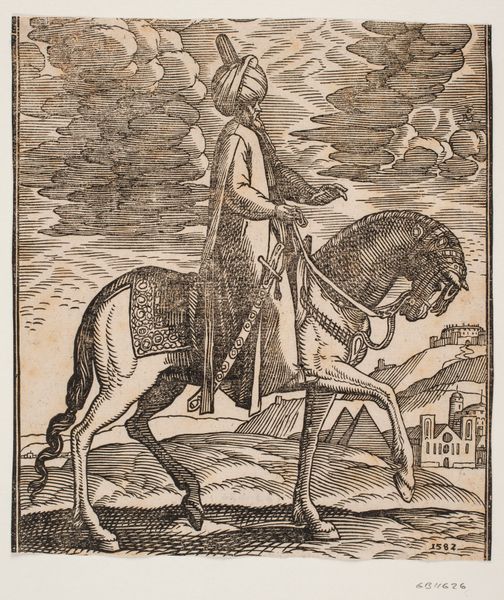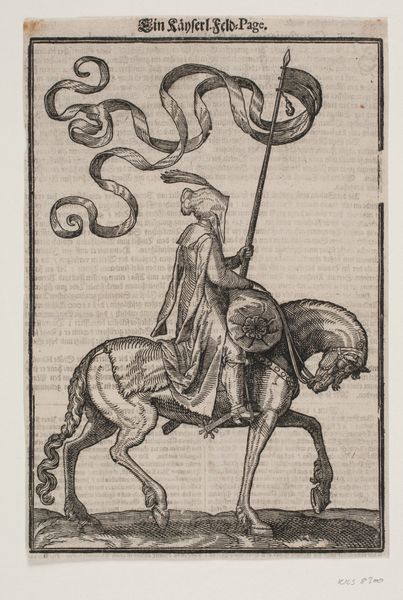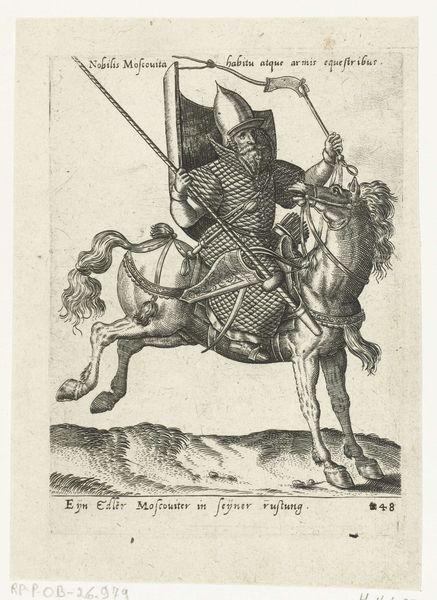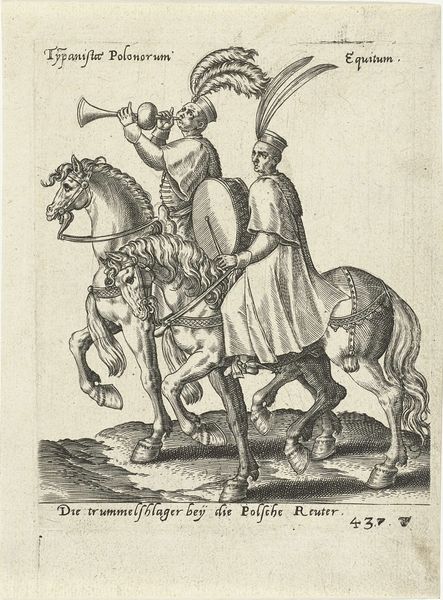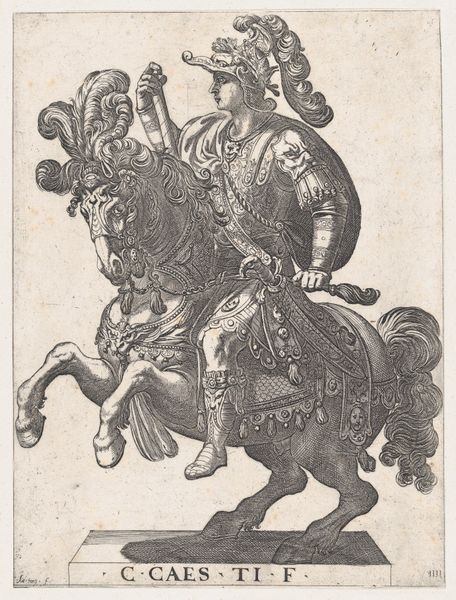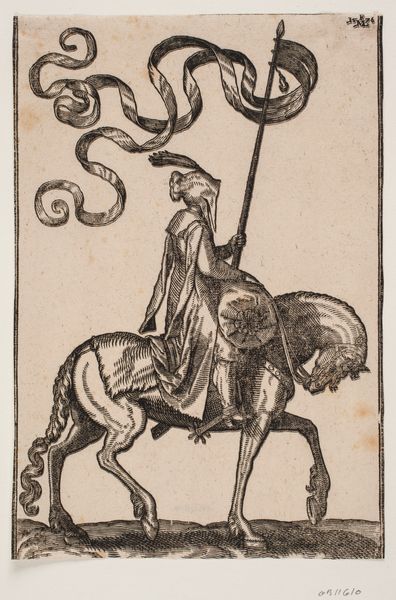
Bereden standartbærer, profil mod v.; standarten er 3-fliget og under den er ophængt en fjer; hans sværd anbragt mellem hans v. ben og hestens flanke 1576
0:00
0:00
print, woodcut
#
portrait
# print
#
figuration
#
11_renaissance
#
woodcut
#
northern-renaissance
Dimensions: 227 mm (height) x 156 mm (width) (bladmaal)
Curator: What strikes you first about this print, I wonder? Editor: It has a very strong sense of formality, almost theatrical. The controlled lines and the meticulous detail give it a stiff, stately feel. Curator: That formality is interesting, especially considering the subject. We are looking at a woodcut from 1576 by Melchior Lorck titled “Bereden standartbærer, profil mod v.; standarten er 3-fliget og under den er ophængt en fjer; hans sværd anbragt mellem hans v. ben og hestens flanke,” which translates roughly to "Mounted Standard Bearer, profile to the left; the standard is three-part and a feather is hung under it; his sword placed between his left leg and the horse's flank." Editor: That title is… remarkably specific. Is the focus really on the subject or the symbolic representation of power through the standard? I wonder, considering it's the Northern Renaissance, what political narratives or commentary is present? The figure, identified as a standard-bearer, could represent any number of imperial armies, so I am interested in exploring whose "truth" Lorck represents in this portrait. Curator: Your interpretation touches on important layers. The very act of depicting a "foreign" figure, a person probably of Ottoman descent judging from his turban, and depicting him as a military man reveals much about Europe’s relationship with the "East" during this era. And how he presents that person matters enormously, the work shows a strong Ottoman warrior ready to fight. Editor: It absolutely shapes the European perspective and that makes me uncomfortable, especially as an activist, looking at this image, it begs to raise the issue of historical misrepresentation and the creation of stereotypes. Art in the Northern Renaissance was often propaganda for their particular worldview. Curator: Exactly. It underscores the politics of image-making and how it played a part in shaping perceptions of "the other". It’s a portrait of power but power always rests within particular contexts and agendas. The figure is elegant, but the art object, for consumption by whom and for what reasons, really does matter. Editor: It gives a great insight into the historical forces at play and into who decided who gets to tell what stories about who. A fascinating and sobering point, thank you. Curator: It highlights art’s engagement within a context where we get to investigate those complicated narratives.
Comments
No comments
Be the first to comment and join the conversation on the ultimate creative platform.
